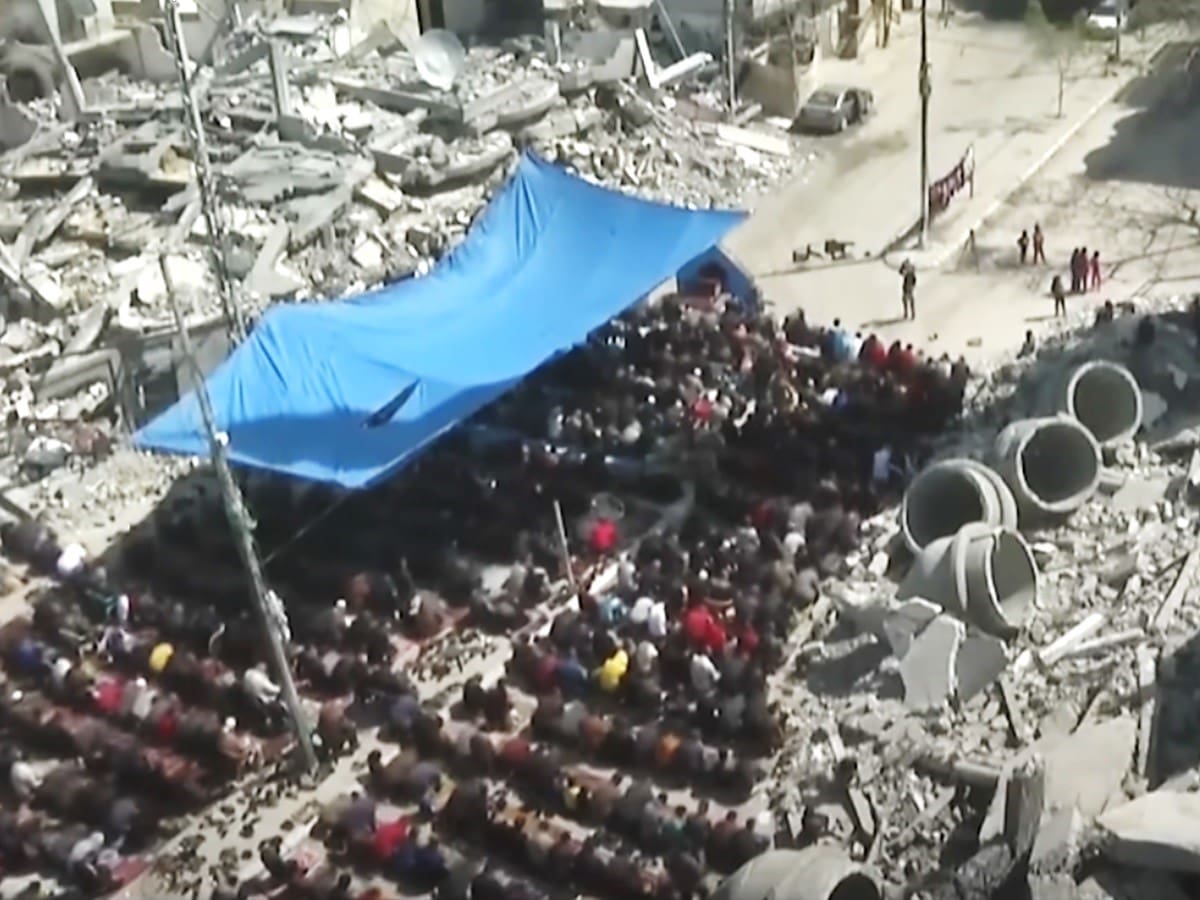Dozens of people in Gaza offered prayers on Monday 11 March, the first day of Ramadan, in the middle of the ruins of a mosque hit by an Israel air strike just days ago.
Standing in rows before a prayer leader with their hands folded, the Palestinian men were entering a fasting month unlike any they had experienced before.
Many of those not attending prayers were out in the streets looking for whatever food they could find for their families living in makeshift camps across the genocide-ravaged territory.
Ramadan in Gaza: ‘I wish the planes would kill me’
“I wish the planes would bomb me and I die,” said Zaki Hussein Abu Mansur, once the proud owner of a house he had built for his family in Khoan Yunis – where Israeli forces are engaged in what the International Court of Justice called ‘plausible genocide’.
The 63 year old told Agence France-Presse (AFP):
It is better to die than live this life. Sometimes we see that the things that we need are in the market but we can’t buy them.
Thanks to Israel, deprivation is normal in Gaza this Ramadan. Markets in Rafah are short on food items and few stores have qatayef, a dessert traditionally sold during Ramadan.
The bright lights and decorations that usually adorn streets during the fasting month are glaringly absent, though some stalls display Ramadan lanterns.
Maisa al-Balbissi, a 39-year-old displaced mother of two from northern Gaza and now sheltering in Rafah, said:
We can’t even afford vegetables, let alone fruit. Everything is too expensive. My children and I are unable to buy anything. Prices of even the simplest items have skyrocketed.
We ‘don’t feel joy’
Palestinians are observing Ramadan this year amid the relentless military campaign launched by Israel in response to Hamas’s 7 October attack.
Israel’s genocidal offensive has killed at least 31,112 people, mostly women and children. For those it has forced to stay in overcrowded camps for the displaced, the bleak reality of food shortages and unhygienic living conditions has dampened the holy month’s festive mood.
Around 1.5 million people have sought refuge in Rafah, according to the UN, largely without access to food, water and medicines.
Abu Mansur described his daily battle to AFP:
I suffer from diabetes, high blood pressure and heart problems. I cannot eat canned food items.
Despite Israel and Egypt’s long-running blockade of the Gaza Strip, in previous years the goods needed for Ramadan were still available.
Abdelrahman Ashur, 19, told AFP:
This Ramadan is different from last year when everything to do with Ramadan was available – be it electricity, food, water. Nothing is available anymore. We don’t feel that joy. Every Ramadan we used to be at home and now we are sitting in tents that we built with our own hands.
The ‘real test is coming’
As the sun rose on the first day of Ramadan, smoke from Israeli air strikes was visible over Rafah.
Awni al-Kayyal, 50, said he saw ambulances carrying the dead bodies of those Israel had killed as soon as he woke up:
The start of Ramadan has been sad and covered in darkness, with the smell of blood and stench everywhere… I woke up in my tent and started crying at our situation.
Late on Sunday 10 March, worshippers performed evening prayers at Al-Hadi mosque, damaged in an Israeli strike. Its classic Islamic arches are now chipped and cracked, while the concrete columns supporting the ceiling inside are dangerously askew.
Israeli forces have targeted more than 500 mosques since the beginning of the war, with 220 of them destroyed.
Meanwhile, in Israeli-occupied East Jerusalem, fears of attacks during Ramadan prevail among Palestinians.
Every year, tens of thousands of Muslims perform Ramadan prayers at the Al-Aqsa mosque, the third-holiest site in Islam. However, Palestinian’s concerns are growing.
Ali is a resident of the Old City. He said:
For now it’s more or less quiet. We will see on Friday. That will be (the) real test.
Featured image via CBC News – YouTube
Additional reporting via Agence France-Presse




